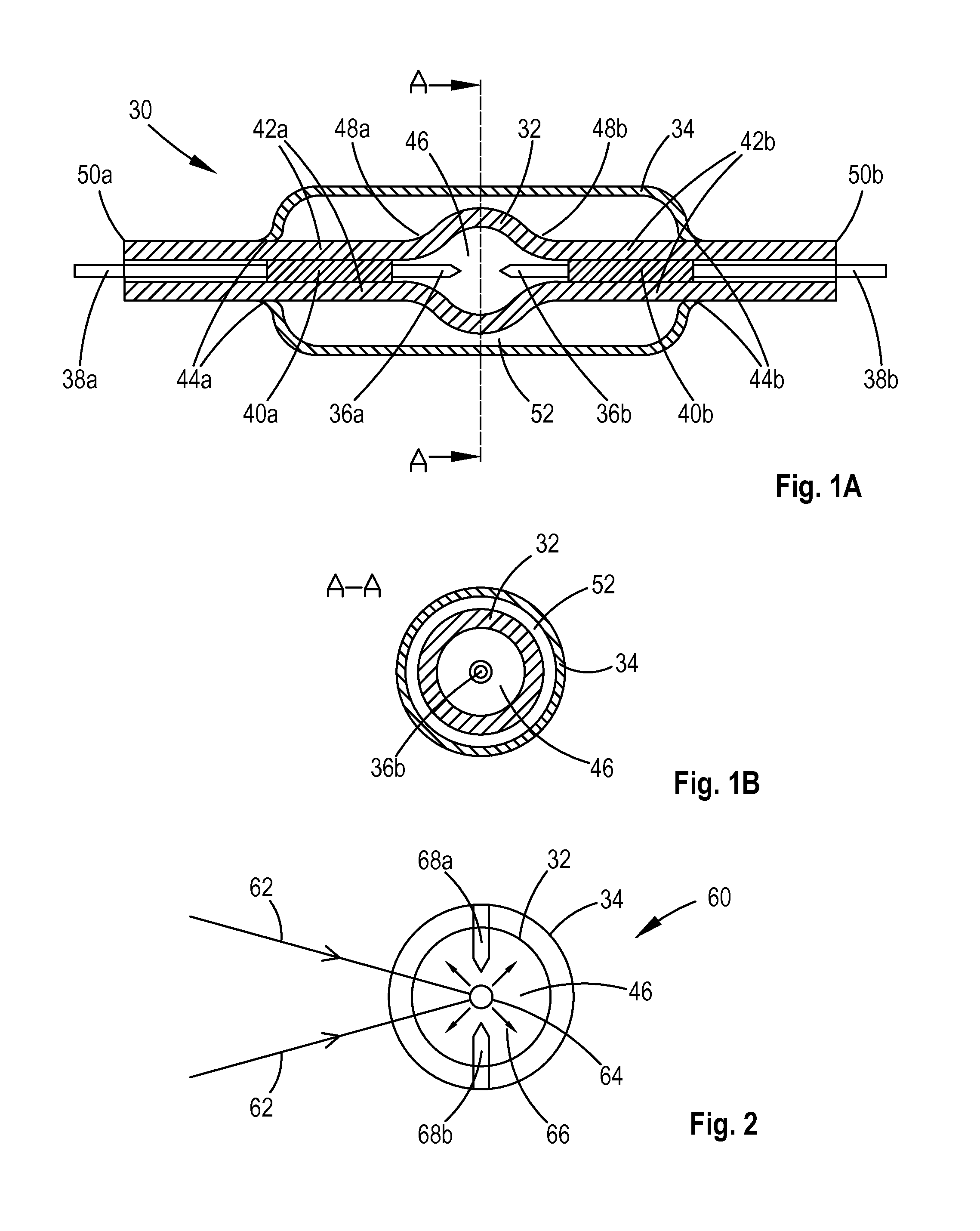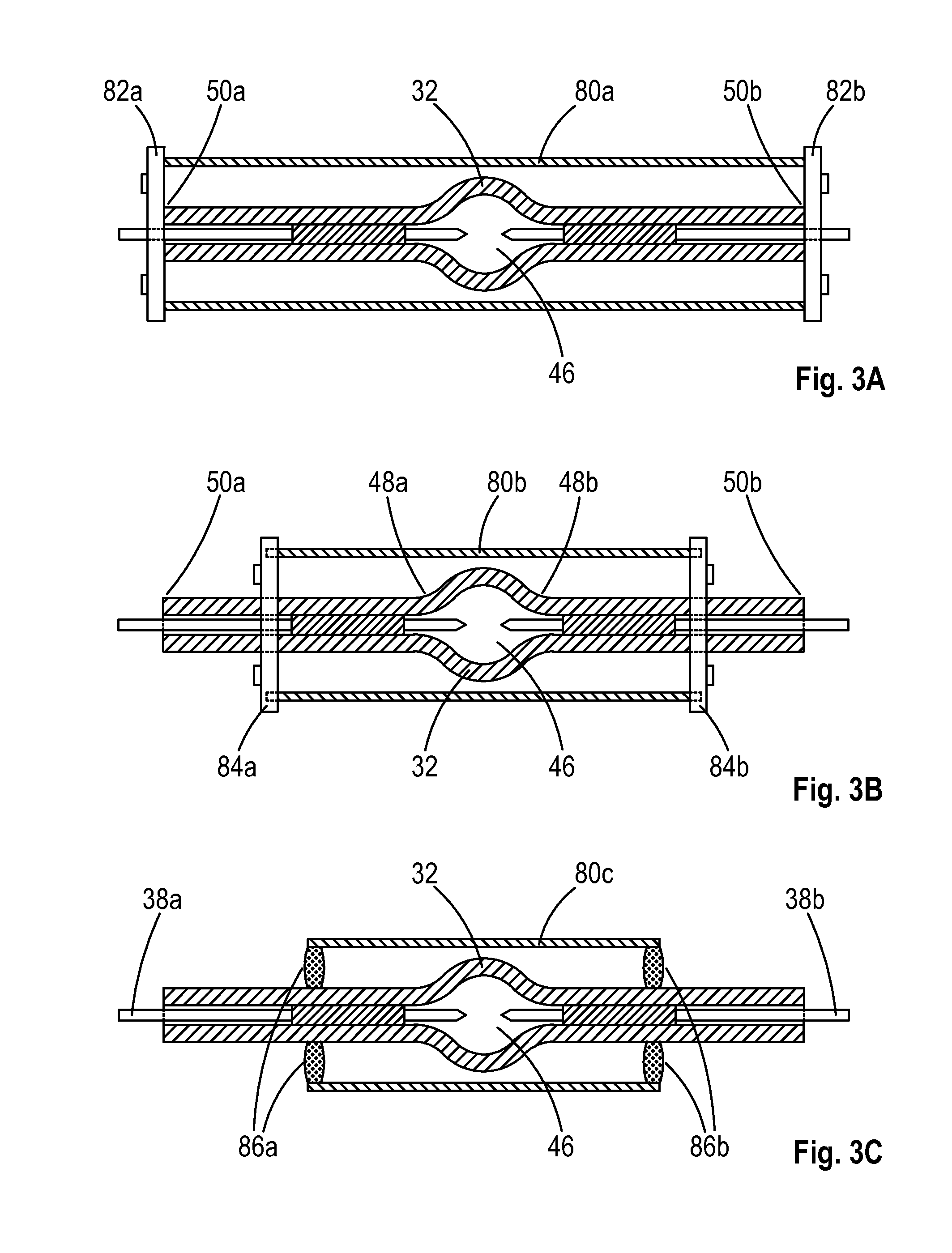Light Source Driven by Laser
a laser and light source technology, applied in the field of light sources, can solve the problems of affecting the thermal balance of the hot plasma inside the chamber, the single-wall chamber does not provide sufficient insulation for the blockage of the heat transferred, and the drift is more severe, so as to reduce the heat loss of the light source, minimize the waste of laser power, and improve the thermal balance inside the chamber.
- Summary
- Abstract
- Description
- Claims
- Application Information
AI Technical Summary
Benefits of technology
Problems solved by technology
Method used
Image
Examples
Embodiment Construction
[0028]FIG. 1A shows a typical enveloped chamber assembly 30 comprising a gas-tight single-wall chamber 32 which is covered with an envelop 34. A pair of electrodes 36a and 36b are arranged at the opposite positions inside the chamber and are electrically connected to the two conductors 38a and 38b through members 40a and 40b, which are sealed to the walls 42a and 42b respectively of the two tubes adjoining the chamber. The sealing is made by softening the tubes' walls 42a and 42b in the areas with one or more torches and then pressing the walls or letting the walls collapse by themselves toward the members 40a and 40b. The chamber 32 is entirely jacketed with the envelop 34 with a preferential clearance of at least 0.1 mm, although a fraction of 0.1 mm clearance or even no clearance is also allowed. In this embodiment, the two ends of the envelop 34 are shrunk and attached to the tubes at the locations 44a and 44b where the members 40a and 40b meet the conductors 38a and 38b.
[0029]...
PUM
 Login to View More
Login to View More Abstract
Description
Claims
Application Information
 Login to View More
Login to View More - R&D
- Intellectual Property
- Life Sciences
- Materials
- Tech Scout
- Unparalleled Data Quality
- Higher Quality Content
- 60% Fewer Hallucinations
Browse by: Latest US Patents, China's latest patents, Technical Efficacy Thesaurus, Application Domain, Technology Topic, Popular Technical Reports.
© 2025 PatSnap. All rights reserved.Legal|Privacy policy|Modern Slavery Act Transparency Statement|Sitemap|About US| Contact US: help@patsnap.com



